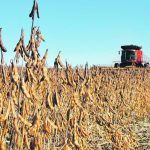
Klassen: Feeder markets experience stronger demand

Klassen: Western Canadian calf markets percolate higher

Klassen: Western Canadian feeder market demand remains firm

Klassen: Discounts start to appear in the feeder market

Record soybean crop expected for Ontario
Ontario farmers are expected to harvest 4.3 million tonnes of soybeans this fall, according to latest StatsCan survey

Klassen: Feeder cattle markets in price discovery mode

Klassen: Feeder cattle market stabilizes

Klassen: Larger supplies weigh on feeder market

Klassen: Yearling market softens on economic uncertainty


